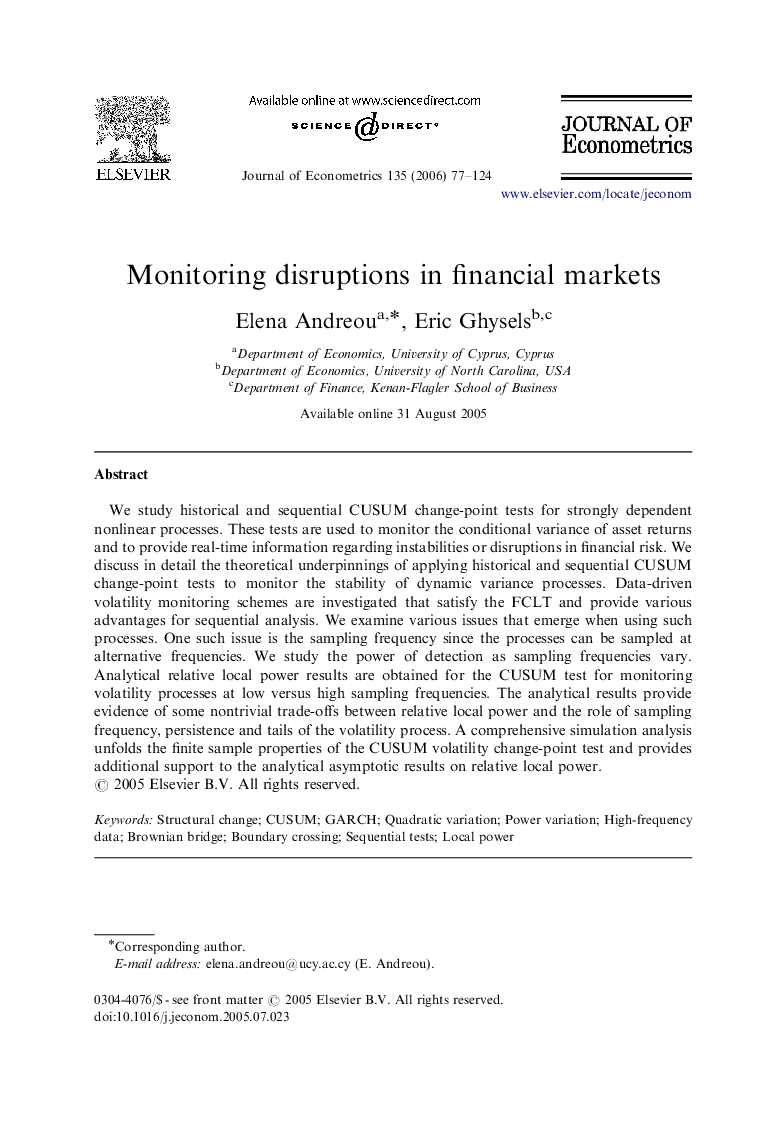| Article ID | Journal | Published Year | Pages | File Type |
|---|---|---|---|---|
| 5097469 | Journal of Econometrics | 2006 | 48 Pages |
Abstract
We study historical and sequential CUSUM change-point tests for strongly dependent nonlinear processes. These tests are used to monitor the conditional variance of asset returns and to provide real-time information regarding instabilities or disruptions in financial risk. We discuss in detail the theoretical underpinnings of applying historical and sequential CUSUM change-point tests to monitor the stability of dynamic variance processes. Data-driven volatility monitoring schemes are investigated that satisfy the FCLT and provide various advantages for sequential analysis. We examine various issues that emerge when using such processes. One such issue is the sampling frequency since the processes can be sampled at alternative frequencies. We study the power of detection as sampling frequencies vary. Analytical relative local power results are obtained for the CUSUM test for monitoring volatility processes at low versus high sampling frequencies. The analytical results provide evidence of some nontrivial trade-offs between relative local power and the role of sampling frequency, persistence and tails of the volatility process. A comprehensive simulation analysis unfolds the finite sample properties of the CUSUM volatility change-point test and provides additional support to the analytical asymptotic results on relative local power.
Keywords
Related Topics
Physical Sciences and Engineering
Mathematics
Statistics and Probability
Authors
Elena Andreou, Eric Ghysels,
